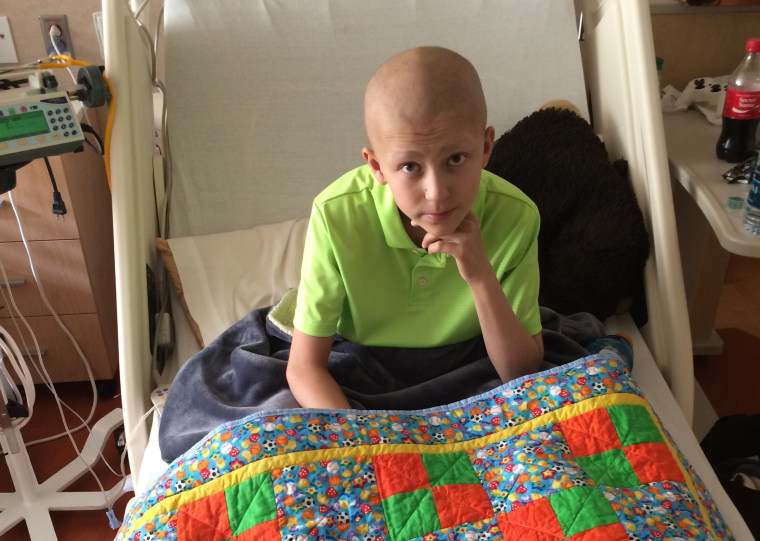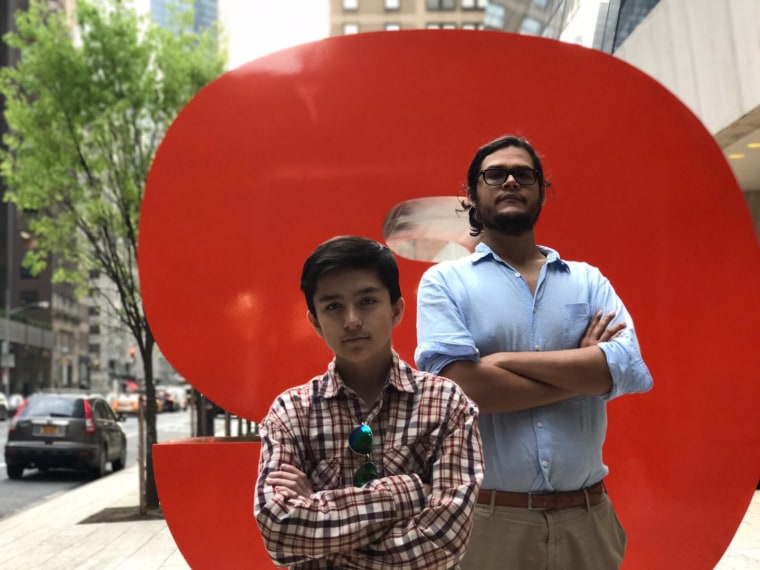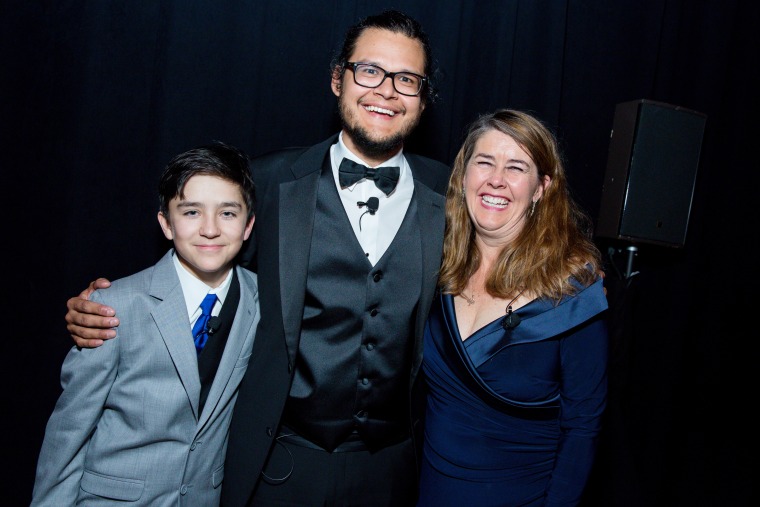As 45-year old Maritza Mendez, a single mother of one and an Acute Lymphoblastic Leukemia patient, waits for a potentially life-saving bone marrow transplant she is trying to beat the clock and the odds.
“I just don’t think too much. I don’t Google the stuff that’s out there,” Mendez said, “I want to be my own statistic.”
There’s a desperate need to find bone marrow donors of Latino origin. Only 11 percent of potential donors in the national bone marrow donor “Be The Match” registry are Latino.

Mendez's information was run through the national registry of bone marrow donors in January, but thus far no match has been found.
“My match is most likely going to be found in the Latino community,” Mendez said.
RELATED: Editorial: The Urgent Need for Black Bone Marrow Donors
“The bone marrow transplant will save my life, it’s an opportunity to cure me from leukemia,” Mendez told NBC News, “It would mean I get to see my daughter grow up, get married, I get to see my grandchildren. I have had my plans all my life not realizing they could not happen.”
Mendez was born in El Salvador and her family moved to Los Angeles when she was 8.
She was diagnosed in October of last year with ALL, a cancer that affects the bone marrow and blood cells. She had been feeling sick for about a month when, while she was driving on a California street, she could no longer go on.
“I ran out of steam, parked my car and told my father I need to go to the E.R.” Mendez said. “The doctor told me ‘Your organs were shutting down already.’”
She’s now undergoing a clinical trial at University of California, Los Angeles.
“I just wish the Latinos would be more involved,” she said, “I see the lack of interest, I see the need to make people more aware and explain it to them to see how simple it is to save someone’s life”
DKMS, an international nonprofit that finds bone marrow donors, has been trying to increase Latino bone marrow donors through Spanish language and Latino media.
“It is just a fact that this population is underrepresented,” said Carina Ortel, the CEO of DKMS. She said finding a bone marrow match is more likely to happen when ancestry is similar.
Tissue types used in matching are inherited, so matches are more likely between people of the same ethnic ancestry or ethnic background, according to Be The Match's website.
While 3 percent of whites are unlikely to find a match, 20 percent of Hispanics may not, according to Be The Match. Twenty-three percent of Native Americans and 28 percent of Asians are not likely to find a match. African Americans fare the worst, with more than a third not likely to find a match.
Family members can be an option, but only about 30 percent of patients find matches among close relatives.
RELATED: New Pill Helps Leukemia Patients Live Longer
Thirteen-year-old Ezra Miller, a teen from Castle Rock, Colorado, found a match in the Latino community.

Miller was diagnosed with Acute Myeloid Leukemia after feeling sick during a hiking trip in August 2015.
He found a match in 29-year-old Luis Miranda, the son of an undocumented immigrant, who grew up in Salt Lake City, Utah and is now at work on a second master's degree.
According to Miranda, about eight years had passed since he signed up to become a donor to when he got a phone call notifying him that he was a match.
“When the moment came that I could make a difference in somebody else’s life,” Miranda said, “It was powerful.”

In 2008, a car crash killed Miranda's sister and her husband in Guatemala, leaving him and his undocumented mother to care for the children left behind.
“I wasn’t able to help my family when we struggled, when I lost my sister I felt impotencia (helpless),” said Miranda, who was born in Los Angeles and moved between the U.S. and Guatemala as a child. “But now, I could be in a position to make it right for someone else”
Ezra and Miranda were able to meet each other for the first time in April at a gala for DKMS in New York City.
“He gave my son a second chance at life,” said Cynthia Lowery, Ezra’s mother, “It’s hard to articulate how grateful we are.”

She hopes others will also take the time to register.
“There’s people that have been lost because they couldn’t find donor matches,” she said. “Many kids don’t walk out that door.”
RELATED: ‘Mixed Marrow’ Doc Hopes to Educate, Encourage Bone Marrow Donation
DKMS has registered more than 7.2 million donors overall.
“We love to talk about the stories that have a happy end, but we see a lot of patients that don’t,” Ortel said.
Mendez said she hasn’t given up hope.
“The bone marrow transplant will save my life,” she said, “It’s an opportunity to cure me from leukemia. To help raise my grandchildren, to see my daughter get married.”
To find out if you can become a donor visit: www.dkms.org/en.
